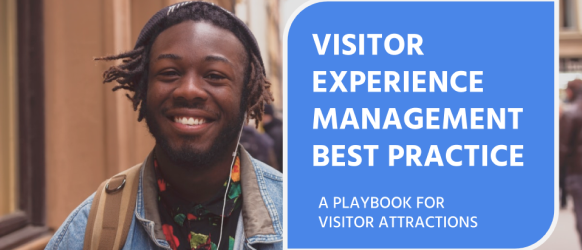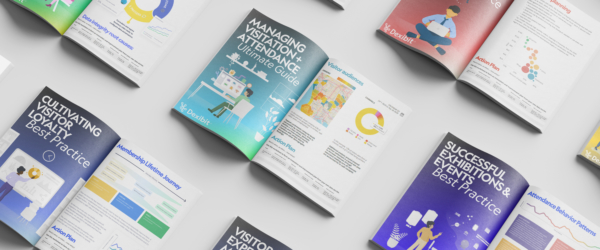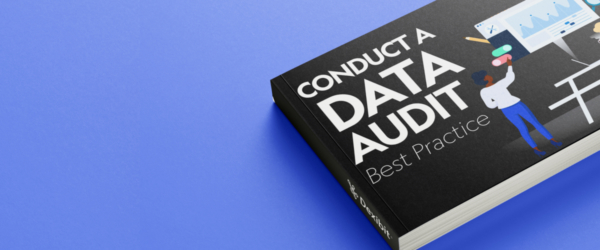10 data tricks for marketing leaders in visitor attractions
- In Demand, Visitor Experience
- Articles
- 5 min read

At a macro level, marketing analytics in visitor attraction venues first need to be able to articulate Visitor Acquisition Cost (VAC), to identify the conversion rates in the buying funnel as visitors action a decision to visit, then comparatively assess which channels to attribute that performance to. Whilst the first is somewhat simple to accomplish (albeit tricky to granularly monitor in real time if visitation data isn’t readily accessible to the marketing department), the latter parts of that strategic picture are where complexity sets in.

Throughout the funnel of awareness, interest, consideration, intent, evaluation and purchase, the visitor’s decision process likely spans online versus offline channels and actions, including possible conversion at walk up. We also know from the old advertising adage that the marketing message needs to touch a visitor 7+ times before purchase, so working out which channel gets what attribution is tricky. Throw in visitor quality objectives, such as navigating diversity in a cultural institution, a responsibility for yield in a commercial attraction or a drive towards end conversion into recurring revenue such as membership products and all of a sudden, digital analytics alone no longer cut it.
In combining all sorts of data from systems of record such as ticketing together with third party channels such as Google and other contextual information such as weather, with Dexibit we quickly develop a comprehensive picture of what influences a visitor and a tidy package to share the marketing picture with other departments.
The data roll call for marketing in visitor attractions usually includes visitation and revenue sources (footfall, ticketing, membership and point of sale), web analytics, social media channels (Facebook, Twitter, Instagram, YouTube and more), social review sites, earned media monitoring (even if just a Google news RSS feed) and the marketing campaign calendar with spend. Add machine learning to help predict what visitors will do and natural language to interpret why and Dexibit delivers a powerful insights engine to inspire marketing strategy and tactics.
Here are 10 ways to leverage this for marketing executives:
1. Using residuals for campaign attribution, wane and optimization
Machine learning forecasts do more than just predict the future – they provide an informative baseline with which to measure actual performance. The difference between actual versus forecast, known as the residual, can then be analyzed by campaign to identify what marketing strategies are delivering and where investment can be doubled down, versus which are simply resulting in audiences that would occur organically. This is especially informative over time to determine where campaigns start to wane, to call the all important moment where they inevitably no longer deliver a return.
2. Using forecast factors to inspire marketing strategies
Another byproduct of forecasting is the forecast factor analysis, showing which elements of the visitor’s decision to visit or purchase had comparatively more impact on decisions. The contrasting influence of these can be used to inform marketing strategy – for example, if cruise ships show as dramatically more impactful than public holidays, advertising may be better redirected towards these tourists than local holiday visitors.
3. Contrasting and settling channel partner performance
For many visitor attractions, channel partners are an important layer in ticket sales – whether these are street operators, hotels or tour operators. Understanding which partners are performing, and where growth is occurring helps concentrate investment where it can be most impactful, or borrow lessons from one partner to another to rise the tide. Plus, being able to easily query ticket sales means easier settlement of revenue collections for finance teams.
4. Tracking offer performance
Tracking campaign codes from ticket, member or point of sale transactions where an offer has been redeemed shows how these tactics are performing in market to boost sales, particularly for campaigns spanning more than one category.
5. Optimizing price
Maximizing yield by balancing visitation versus ticket price for general admission or activities such as exhibitions is a delicate balance, yet a big opportunity. If pricing is left up to anecdotal opinion, often teams over emphasize price sensitivity and miss subtleties on the relationship of price to product or audience. Quantifiably measuring elasticity provides for informed pricing decisions.
6. Using zip codes for location based advertising
Overlaying a map with zip codes from visitors or members provides a visual clue to where to concentrate investment in high return areas or diversify into new opportunity zones, particularly for location based advertising such as billboards or mail drops. This can apply at a citywide or countrywide level.
7. Using sentiment to highlight voice of the visitor
Using sentiment analysis to interpret the themes and emotions from freeform visitor comments helps listen to visitors at scale – delivering insight on which elements of the visitor experience resonate with the public, market feedback on elements such as pricing or new products and brand reputation monitoring.
8. Optimizing the marketing mix using simulation
Activity simulations such as for exhibition predictions involve modelling of the marketing mix: product, price, place and promotion, amongst other factors. Again a by product of forecasting, price elasticity and marketing budgets can be optimized to maximize visitors and yield. Pro tip: when analyzing marketing budgets, the macro level of Visitor Acquisition Cost should include creative, but when simulating marketing budget for activities, this should be excluded in favor of ad spend only.
9. Digital correlation and optimization
Plotting digital audiences against onsite visitation reveal two important trend elements: correlation strength (indicating the involvement of digital in the visitor journey) plus correlation lag (measuring the delay between the visitor’s online interaction and onsite visit), which can be analyzed by geography and channel. This insight can be used to optimize the channel spend, copy and scheduling of online advertising to maximize digital return on investment. For more, keep an eye out for Dexibit’s new insight model on digital correlations coming soon.
10. International market trends
With international trends comprising a meaningful element of most visitor attraction audience demographics, understanding the influences of international events such as Lunar New Year or Ramadan on visitation trends provides the opportunity to capitalize upon or mitigate against these by highlighting which are most impactful. For more, talk to us about our current insights research into this hot new area.
Want to learn more about Dexibit?
Talk to one of our expert team about your vision to discover your data strategy and see Dexibit in action.







